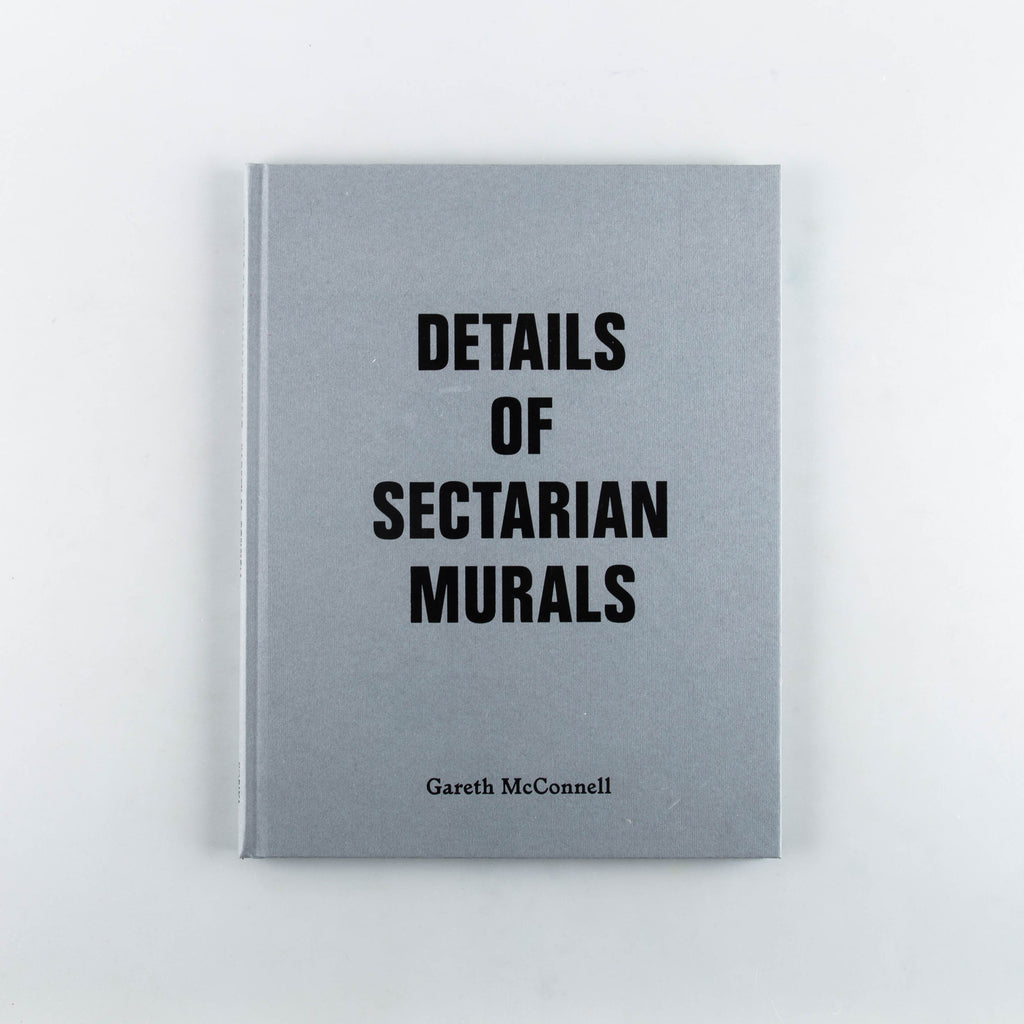Details of Sectarian Murals
Gareth McConnel
£25.00
Sorika is pleased to announce a new book, Details of Sectarian Murals by the photographer Gareth McConnell. McConnell was born in 1972 in Northern Ireland (1) and grew up during the Troubles. His new book of photographs (taken in 1997-1999) gives a fanatical attention to Republican and Loyalist sectarian murals in Northern... Read More
Sorika is pleased to announce a new book, Details of Sectarian Murals by the photographer Gareth McConnell. McConnell was born in 1972 in Northern Ireland (1) and grew up during the Troubles. His new book of photographs (taken in 1997-1999) gives a fanatical attention to Republican and Loyalist sectarian murals in Northern Ireland. The detailed focus of McConnell’s close up photography is so concentrated – only a few square inches of each mural is seen – that the original meaning context of the murals, including their Tricolours, Union Jacks, guns, and signage texts, is lost, completely silencing their strident messaging.
Sectarian murals in Northern Ireland mark territories, pronounce allegiances, celebrate victories, intimidate enemies, define ideologies, and vividly and proudly decorate the often grim pebbledash walls of impoverished urban landscapes (pebbledash being a class signifier). They are described by Sarah Allen, Head of Programme at the South London Gallery, who has written a text for the publication, as ‘By far the most distinctive displays of allegiance [ . . .] Often painted onto the gable end of houses, they are spectacular territorial indicators and boundary markers making plain the reality of segregation.’
The murals are a folk art in which traditional painterly craft values are used, without the overly self-conscious, self-awareness of fine art painting. They are an art form that exists somewhere on a continuum with graffiti, coats of arms, Victorian advertising, ice cream van signage, pub signs, and trade union banners. At another level, however, they are aggressive and hostile, and imply violent consequences to foes and ideological transgressors. Whatever the murals have been, are, or are becoming, tourists are now happy to take guided walking tours of them.
McConnell gives us his own guided tour of the murals, his photographs of them displacing their usual certainties, so as to make them remarkable abstractions – abstractions of vast mood. Applied onto the pebbledash or brick surfaces of terraced houses, the paint marks of gloss or industrial paint, once sticky and wet – complete with splatters and dribbles – now become, under McConnell’s gaze, like huge, melodious abstract expressionist paintings, or photographs taken as if by the Hubble or James Webb space telescopes. McConnell creates a cosmos of incomprehensibly large galaxies in collision, rather than adversarial sectarianism in collision. His micro details become of great macro proportions; a trippy, slightly stoned cosmos of beauty and enormity – of wild, formative, creation and destruction.
1. Northern Ireland is the official name of the region. However there are several other names for the region which reflect differences in political views. These include, but are not limited to: The North of Ireland, The Six Counties, The Province, and Ulster.







